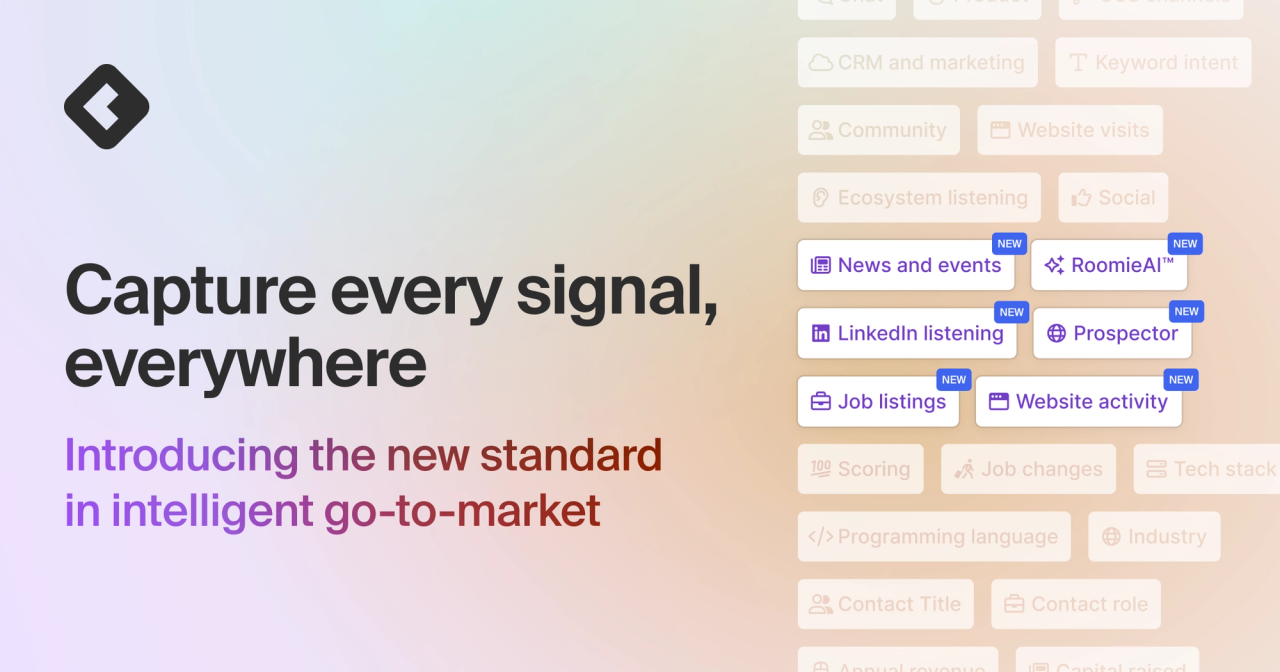As of December 6, 2024, the Chrome Extension for LinkedIn will no longer support the ability to capture engagement from any LinkedIn post. Features like waterfall enrichment and warm intro personalization will continue to be supported.
Common Room held a dinner in San Francisco a couple of months ago and invited a dozen go-to-market leaders.
We kicked things off with a simple question: What’s a current reality in GTM that really bugs you?
Here’s one of our favorite responses (paraphrased and with fewer swear words):
“I absolutely hate it when you log on in the morning and some intent tool tells you that someone somewhere is looking at your product. What the hell am I supposed to do with that?”
Our customers aren’t shy about sharing the pain points of modern GTM, from pre-sales to post-sales.
They tell us about the millions they spend on data initiatives that don’t actually move the needle for frontline teams. They tell us about the endless glut of point solutions that eat up their budgets and go unused. And they tell us about the technologies that promise to revolutionize revenue but only create feel-good pipeline that doesn’t convert.
They know there’s a world of buying signals out there that they can use to develop truly data-driven strategies. But what they’re left with is siloed signals, bloated tech stacks, and unactionable “intent” data.
What they want is a one-stop shop for all their signal needs.
A single platform that generates the signals they don’t have, unifies the ones they do, connects them to real people and accounts, and turns them into real-time triggers, plays, and automations GTM teams can take action on.
We know because that’s how our customers use us every day.
It’s how they zero in on prospects who are 2-3x more likely to buy, drive 26% of qualified leads, and generate 27% of meetings booked.
And it’s why we’re thrilled to announce a major expansion of out-of-the box signals for our customers—no more internal builds or point solutions required.
Starting today, Common Room is:
- Expanding our support for first-party signals with website activity tracking
- Adding more second-party signals, including public LinkedIn post engagement, with our Chrome extension and Prospector feature
- Investing more heavily in third-party signals with news and events, job listings, and an AI-powered enrichment agent we call RoomieAI™
Surveying the signals landscape
The signals our customers tell us they need can be broken down into first-, second-, and third-party:

1st-party signals
These are owned signals that live within the walls of your organization. They’re directly hosted by you in your data warehouse, your website, your CRM, and other technologies.
Think product usage data, website activity, and contact details recorded by sales and customer success teams.
These signals are supposed to be the easiest to access, but that’s not usually the case. Organizations pour tons of resources into democratizing first-party signals for the business, but what they end up with are spreadsheets and dashboards that are overwhelming and hard to take action on. Not to mention the data hygiene issues, like stale contacts stuck in your CRM and duplicate product user accounts hidden in your warehouse.
2nd-party signals
These are signals that are generated when people engage with you across unowned channels (this is usually what people mean when they say “dark funnel” or “dark social”). They live across social media, online communities, digital forums, open-source repositories, and other channels you don’t directly own.
Think likes and comments on LinkedIn posts, company mentions in X/Twitter threads, and product questions in Slack.
While it’s technically possible to track these signals on your own, it’s a full-time job. A very manual, tedious, and time-consuming one. So instead of quickly surfacing signals across second-party channels, most organizations are blind to the majority of this activity. Even if a rep discovers a signal, there’s no easy way to tie it back to a real person and account or uncover the context behind it.
3rd-party signals
These are unowned signals that don’t involve explicit engagement with you, but indicate interest in your industry or product (aka what industry vendors often refer to as “intent data”). They live across numerous digital channels, including news aggregators, job boards, earning reports, and even your prospects’ and competitors' websites.
Think fundraising announcements, job postings, and engagement with competitor content.
Organizations must either track these signals manually or choose from a laundry list of fragmented providers and hope for the best. Still, attribution is a hill many of these tools can’t climb. Without clear, traceable third-party signals, organizations don’t know who’s behind the behavior, whether they should care, or what action to take. And let’s not forget, timeliness is crucial. Signals are only as good as how fast you can act on them.
Our customers were searching for a better way. With their help, we built one.
The Common Room customer intelligence platform automatically identifies, unifies, and enriches every action and attribute from the first-, second-, and third-party channels where your buyers and customers spend their time.

Capturing every signal, everywhere
Here’s what our customers can count on in our platform today and in the days ahead.
What’s available now
Prospector
Our Prospector feature lets you pull in profiles and contact details for non-engaged contacts at target accounts via a proprietary, constantly refreshed database of more than 200 million B2B contacts.
Identify ideal personas, economic buyers, and more, even if they’re not currently active in your digital ecosystem or tracked in your CRM.

“Common Room is already our command center for generating and centralizing signals across digital channels. We’re excited to expand even further by pulling in hard-to-see third-party signals like company news and job listings, not to mention the ability to surface new economic buyers who aren't yet engaging with us in target accounts via Prospector.”

Aisha Nins
GTM Program Manager
Our customers told us there are times when you only have account-level signals or are struggling to pinpoint decision-makers. And we all know multithreading is key to closing deals. Prospector is designed to help you save time that would otherwise be spent manually researching organizations or pestering prospects for additional contacts. There's much more to come—including triggering Prospector to source leads when new buying signals are spotted while you're away—in the weeks ahead.
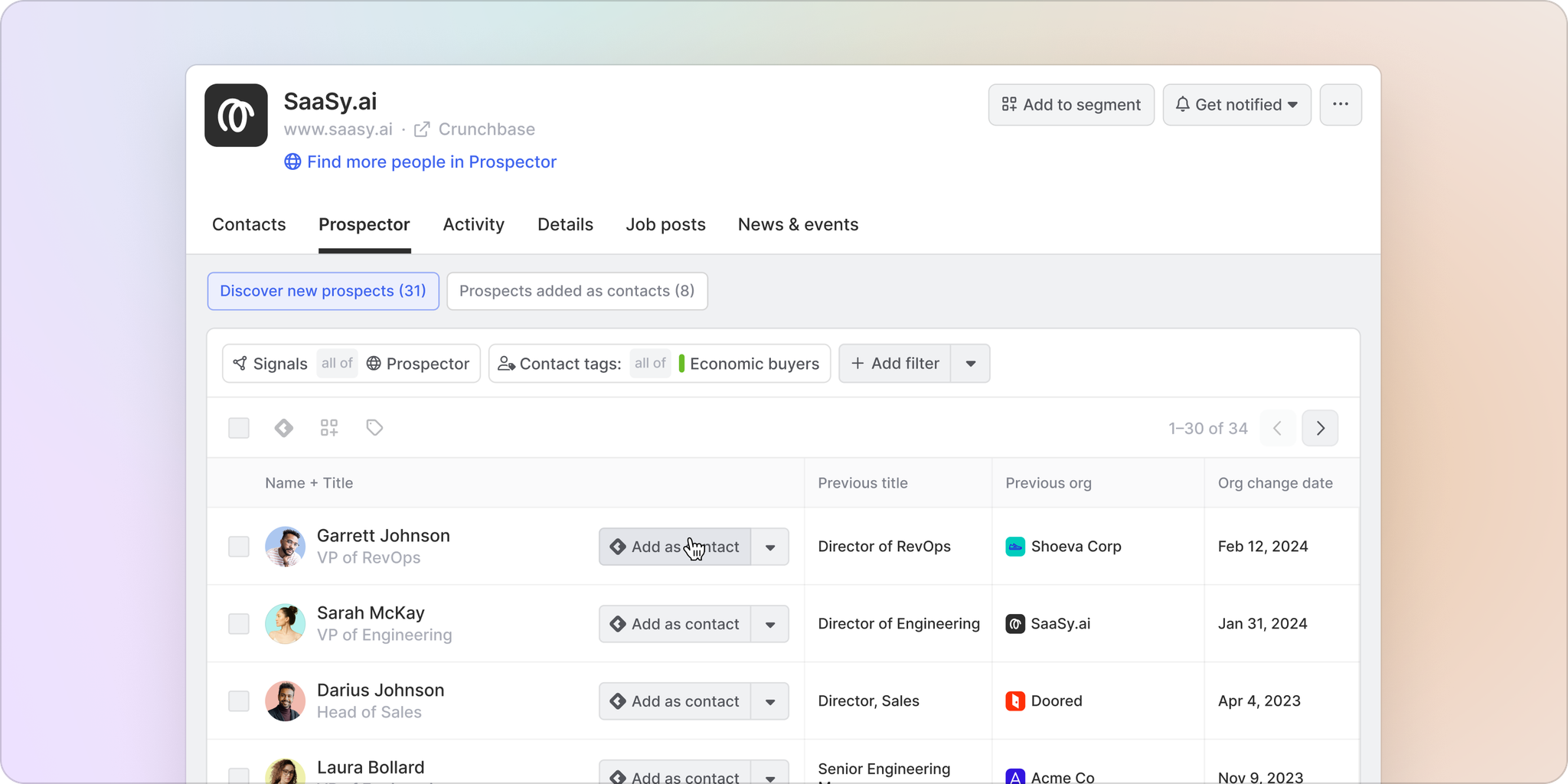
News, events, and job listings
We’ll be rolling out access to daily refreshes of news and events and job listings for over 40 million companies globally in Common Room (as well as the ability to upload lists of accounts and enrich them using this information).
Know when target accounts raise a new round of funding, detect when a business-relevant keyword is mentioned in an earnings statement, and see when a company mentions a topic or term relevant to your product in a job listing.
Our customers told us that leveraging all available signals not only increases their slice of the pipegen pie, it also helps them better define fit so they can focus their time (that’s how one of our customers recently achieved a 2-3x propensity-to-buy lift in their lead and account scoring). With easy access to a wider pool of third-party signals, you can better understand the top priorities of the orgs you sell to, prioritize which opportunities to pursue, and reach out at the right time.
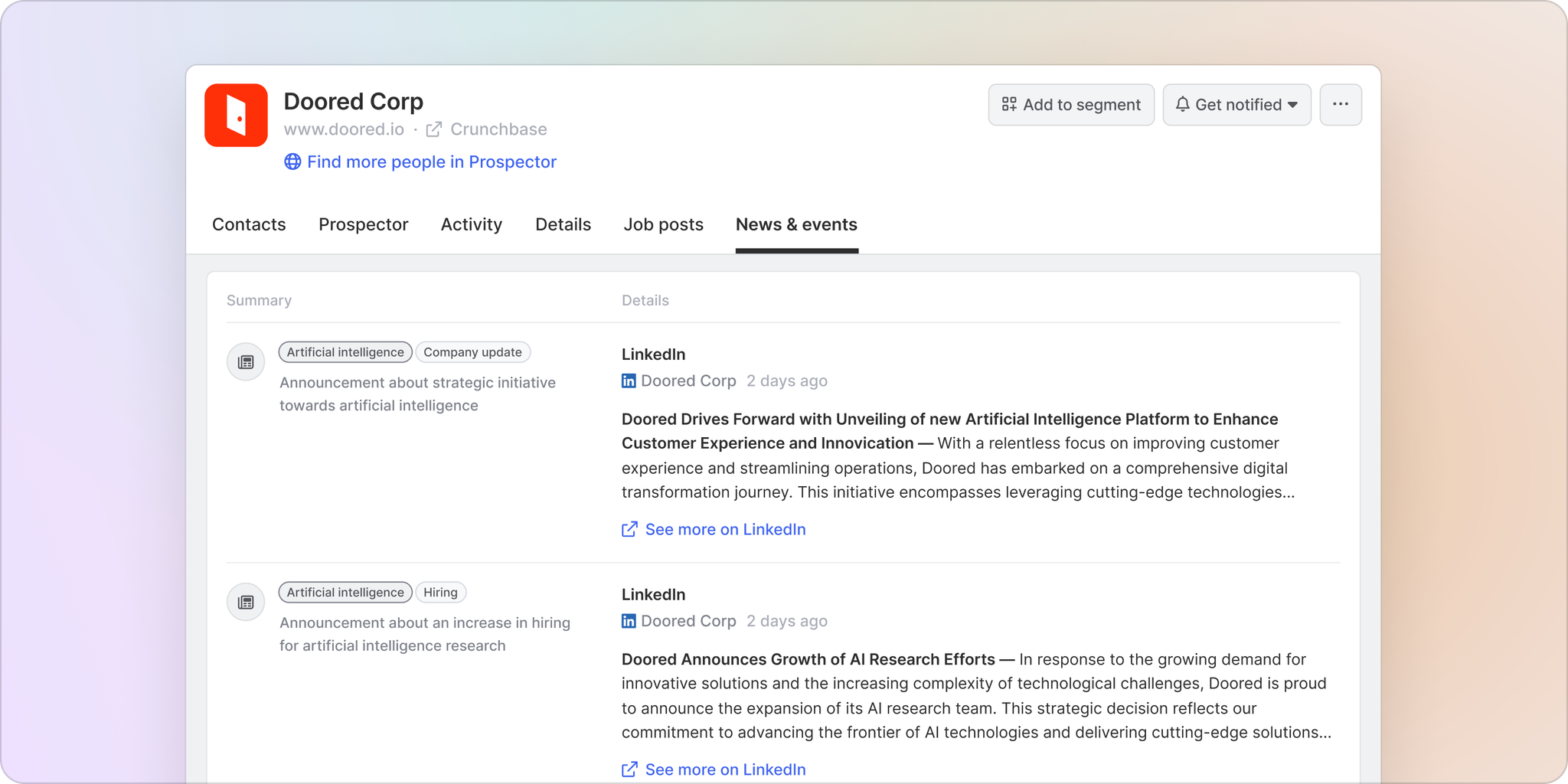
What’s coming soon
Website activity
In the coming weeks, you’ll be able to track website activity as a signal source directly in Common Room.
Get early access to signals coming soon, including website activity, engagement on any LinkedIn post, and our RoomieAI™ signal finder.
Surface economic buyers at organizations where employees have visited your pricing page, use time on site as an input for lead and account scoring, and automate your outbound by instantly adding website visitors to personalized email sequences.

"Reaching the right stakeholders is critical to building a repeatable sales motion and increasing ACVs. Our teams had to jump back and forth between multiple tools to do that, and we were still missing key insights. With Common Room, we can identify the right stakeholders faster."

Nalin Vahil
VP of Sales and Customer Success
Our customers told us they want to make Common Room the center of gravity for signal-based GTM. That includes tracking and deanonymizing website visitors. Our website activity tracking is built to help you connect the dots between website visits and interactions across other digital channels on a person- and organization-level. And thanks to our proprietary Person360™ technology, you can count on identity resolution and enrichment that far surpasses traditional website visit tracking.
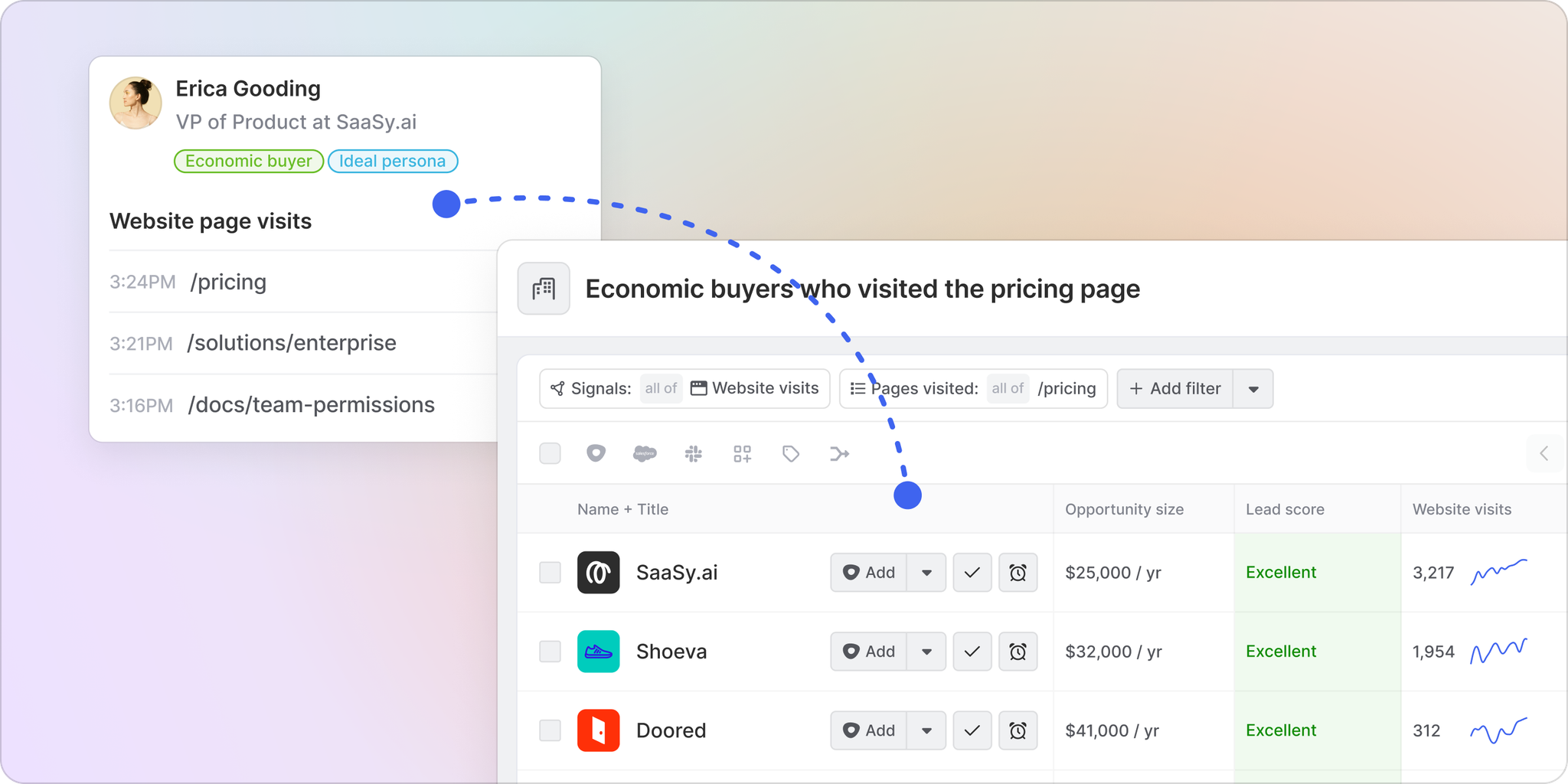
Common Room Chrome extension
With our new Chrome extension, you’ll be able to pull signals from LinkedIn and other sources directly into Common Room—as well as access real-time Person360™ contact enrichment in Common Room—regardless of where you’re working.
For example, you can already use Common Room to explore posts, comments, and reactions on LinkedIn where users explicitly engage with you. Our Chrome extension will allow you to add any public LinkedIn post engagement to Common Room as contacts.
Source contacts based on reactions to thought leaders in your space, see when prospects interact with a competitor, and add high-fit buyers who reacted to or commented on trending posts related to your product to dedicated burn-down lists.
Our customers told us that Common Room is already their go-to solution for signal capture and identity resolution. It’s how companies like Temporal source 50% of their meetings. The ability to tap into this info on the fly and without switching screens is a huge time-saver. What's more, we've seen organizations achieve a 200% lift in pipeline conversion by expanding the person- and account-level signals they can pull directly into Common Room.
Keep in mind that LinkedIn is only the start.
Soon you’ll be able to take our Chrome extension to every corner of the internet. Pull up a prospect’s product usage when you’re reviewing their profile on X/Twitter, instantly deanonymize someone in your repo while you’re in GitHub, and add new contacts you find while browsing the web to segments in Common Room for automated outreach.
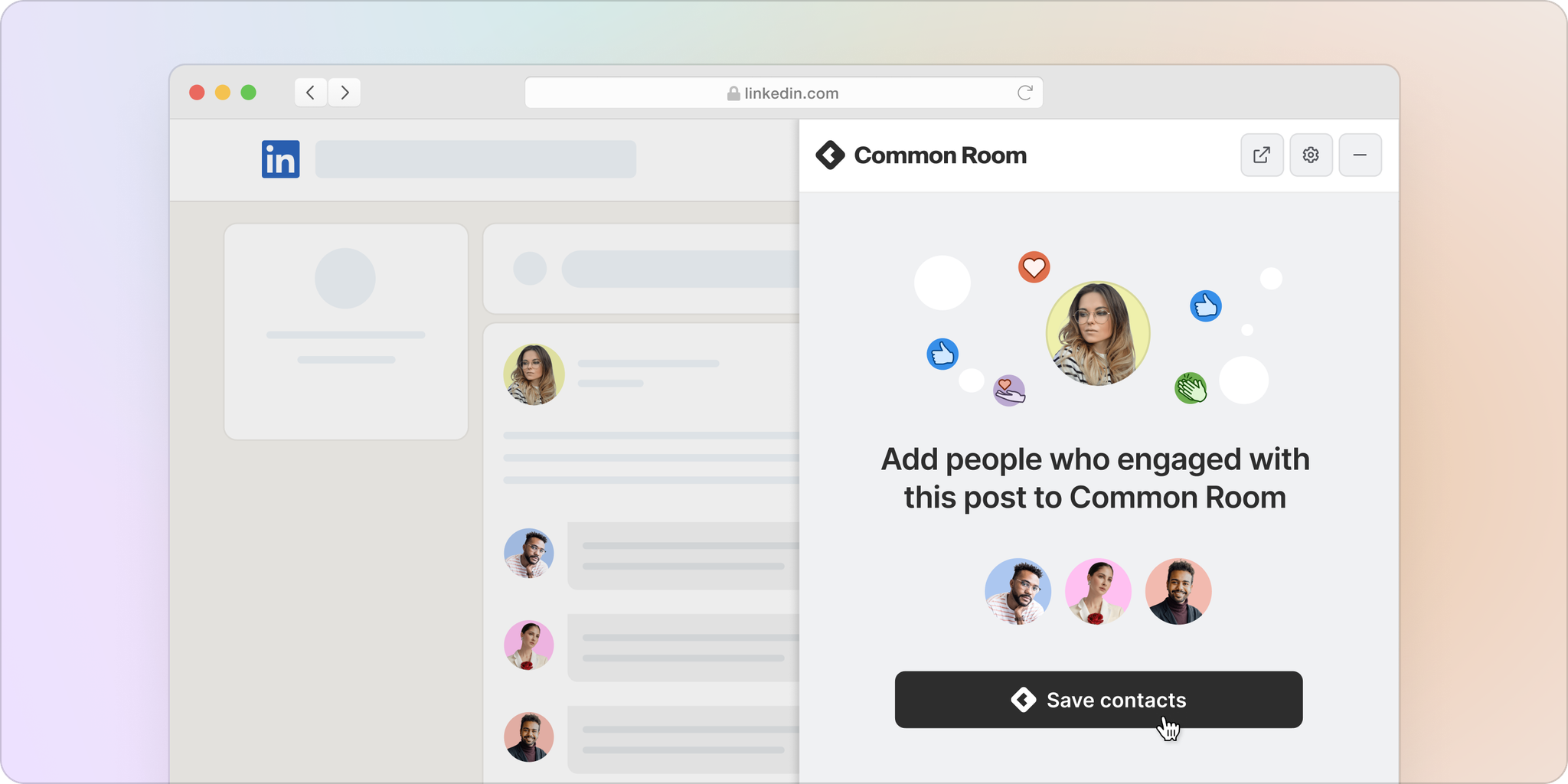
RoomieAI
With RoomieAI, Common Room customers can go beyond our hundreds of out-of-the-box signals and dig even deeper into buyers and customers using custom, AI-detected signals.
Ask RoomieAI to list an organization’s top competitors, surface company priorities from S-1s, or craft an outreach message based on a person’s activities across digital channels.
Our customers told us that the more ways they can scale smart GTM plays through automation, the better. Our AI agent, RoomieAI, will allow you to search the internet for key information, transform unstructured data points into structured enrichment data within Common Room, and even craft messaging based on what you find. This will make it easier than ever to uncover relevant data points and turn them into actionable insights that help you create fuller profiles for people and accounts and take action on them fast.
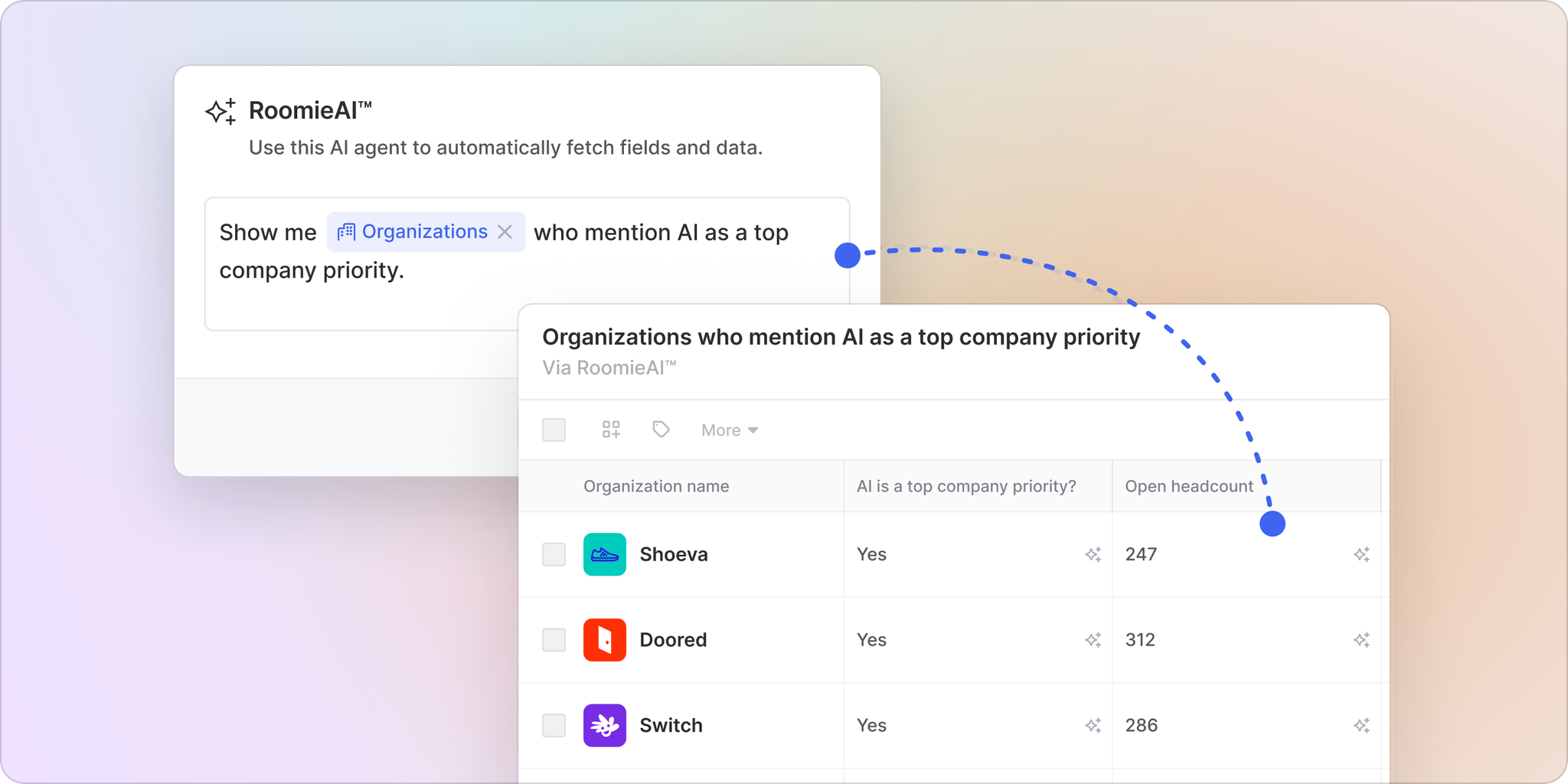
Modern GTM is filled with friction—but not for your buyers and customers.
It’s a golden age for consumers. They have all the tools and information they need to make decisions smarter, faster, and easier.
We’re building the most complete and flexible customer intelligence platform to help GTM teams do the same.
Each and every signal. Connected to a real person and account. Ready-made for revenue.
It’s time to go to market intelligently.
Get early access to signals coming soon, including website activity, engagement on any LinkedIn post, and our RoomieAI™ signal finder.
Run GTM intelligently with Common Room
Get started for free or get in touch to see how Common Room can help you capture every buying signal and connect it to a real person and account.
